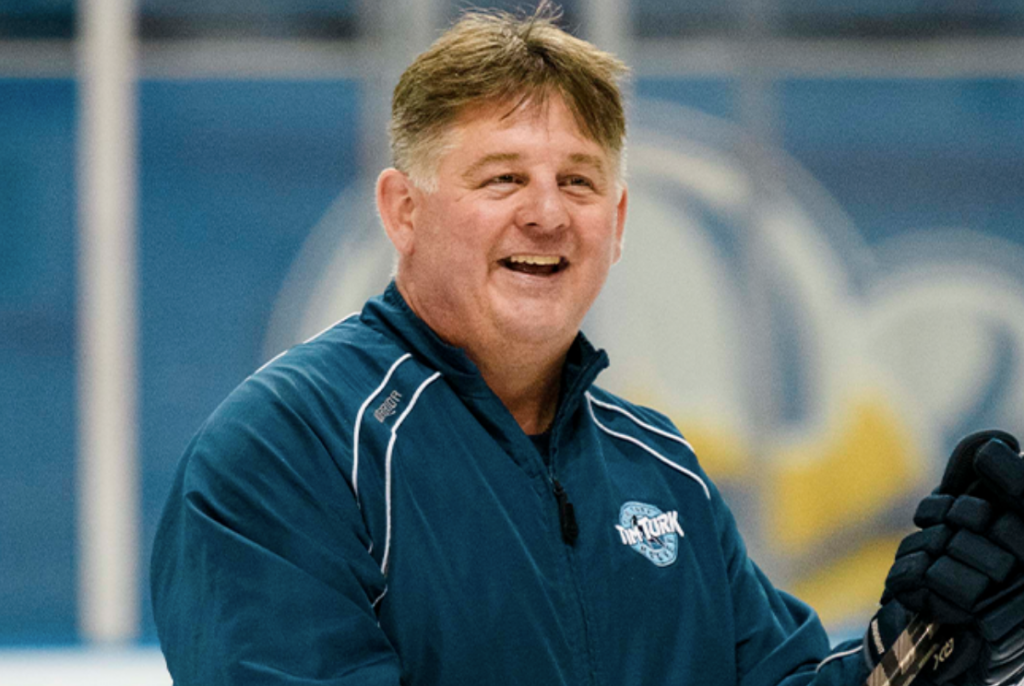
Welcome to part 4 of the Snipe Lights exclusive interview series with top NHL shooting and scoring coach Tim Turk. Tim has coached for several NHL teams and international programs, as well as a who’s who of NHL players.
In this interview, Tim takes us on a deep dive into how science and analytics have taken over the way that both shooters and goalies are being coached.
Snipe Lights empowers players to take Tim’s training and implement it into a gamified, portable, light-up shooting system. Whether at the rink or in the driveway, Snipe Lights keeps players engaged and uses friendly competition to provide a fun, trackable, and addictive shooting target system designed to take any player’s shooting to the next level.
Snipe Lights: So, how do you keep up with the changes in equipment and shooting styles? What’s your method for continuing your own learning process along with the kids and adults who learn from you?
Tim Turk: It’s a multi-layered answer. I remember when I was working with the Finnish national program at their Olympic training facility in Vierumäki, Finland. I walked into a testing session with the players, and normally, the people doing the testing are just coaches on the national team program. They test things like their V max and functional movement. But these guys doing the testing were wearing lab coats. Like, I mean, actual lab coats. And I thought, “What the heck is going on here in Finland?!”
But as I thought about it, I started to relate to it. I compared those lab coats to the way goalie coaches had become super scientific, analyzing everything from the angles and trajectories of the incoming pucks to whether the shooters were right- or left-handed and how they were attacking the goal situationally.
So, this was all a way to help shooters keep up with the science that the goalie coaches were using, and I realized I needed to incorporate this into my training as well. I started studying not just what the goalies are being taught but also how to counteract those techniques as a shooter.
Goalies used to be taught to square up on the puck, but they’ve realized that most shooters actually pull the puck inward toward the body before release. So now, goalies are positioning themselves slightly between the puck and the shooter’s body rather than directly in front of the puck.
I decided to counter this by designing new shot types. Instead of pulling the puck in, let’s pull it behind us or push it out. Changing these release points creates more deception. Combining that with more power and speed makes it harder for goalies.
Body position also affects how deceptive a shot can be. You can shoot off one foot, or you can shoot off two feet like a cowboy drawing the gun off your hip, like Sidney Crosby and Patrick Kane.
And then you can add timing delays to it, doing a single-leg delay or shooting mid-stride. These add unpredictability and affect how well the goalie’s timing is and how well they can get set for shots.
My job is to stay ahead of goalie coaches and goalies to make my players’ shooting as deceptive and effective as possible.
Snipe Lights: It almost feels like a military strategy—one side reacting to the other, constantly trying to one-up each other.
Tim Turk: Exactly! Sometimes, goalies get good at positioning and taking away angles. They turn a save into what feels like a block by just being in the right spot. They might think, “My job is to make the first save, block the puck, and hope it ends up in a spot where a defender or whoever’s covering the net can clear it out. I’ll handle the first and third shots, but someone else needs to take care of that second chance and get it out of there.”
As shooters, we’ve got to study and break down those situations so we can attack consistently and effectively.
Snipe Lights: Do you get into biometrics with your players when you’re coaching?
Tim Turk: Yeah, I do. I’m constantly teaching players about how proper muscle activation helps achieve the torsion needed for optimal force output. Power.
Everything starts with foundational stability. For example, if I’m a right-handed shooter and I’m skating down the ice, my push-off leg is my right leg, and my glide leg is my left. The distance between those legs impacts my posture and balance. Everyone has their own comfort zone—it’s like a fingerprint. No two are alike.
Then there are body mechanics: hip snap, wrist snap, ankle snap, and joint locking. If you’re a right-handed shooter and you don’t fully extend your right arm, you’re leaving force on the table. The angle of your lower hand push and strength of your upper hand pull on the stick matters too because the flex in your stick creates energy.
And those sticks don’t want to be flexed. They want to be straight. So the position of your hands are important for the type of shot you are taking.
A quick release shot has hands closer together, while a loaded power shot has hands farther apart. Finding the right positioning and then making it consistent is crucial.
In the gym, I tell players not to just ‘work out’ but to train with intention. Every curl, every squat—it’s all meant to translate to their shot or skating stride. For example, activating the quads, hamstrings, and glutes efficiently leads to better knee extension, more powerful strides, and harder shots.
At the end of the day, biomechanics are about connecting the mind and body. I design drills that let players feel these mechanics in action. Once they feel it and repeat it consistently, it becomes second nature—and that’s when they can apply it in games.
Related links:
Snipe Lights Exclusive Interview Series with NHL Shooting and Scoring Coach Tim Turk
Snipe Lights Interview with NHL Shooting and Scoring Coach Tim Turk Part 2